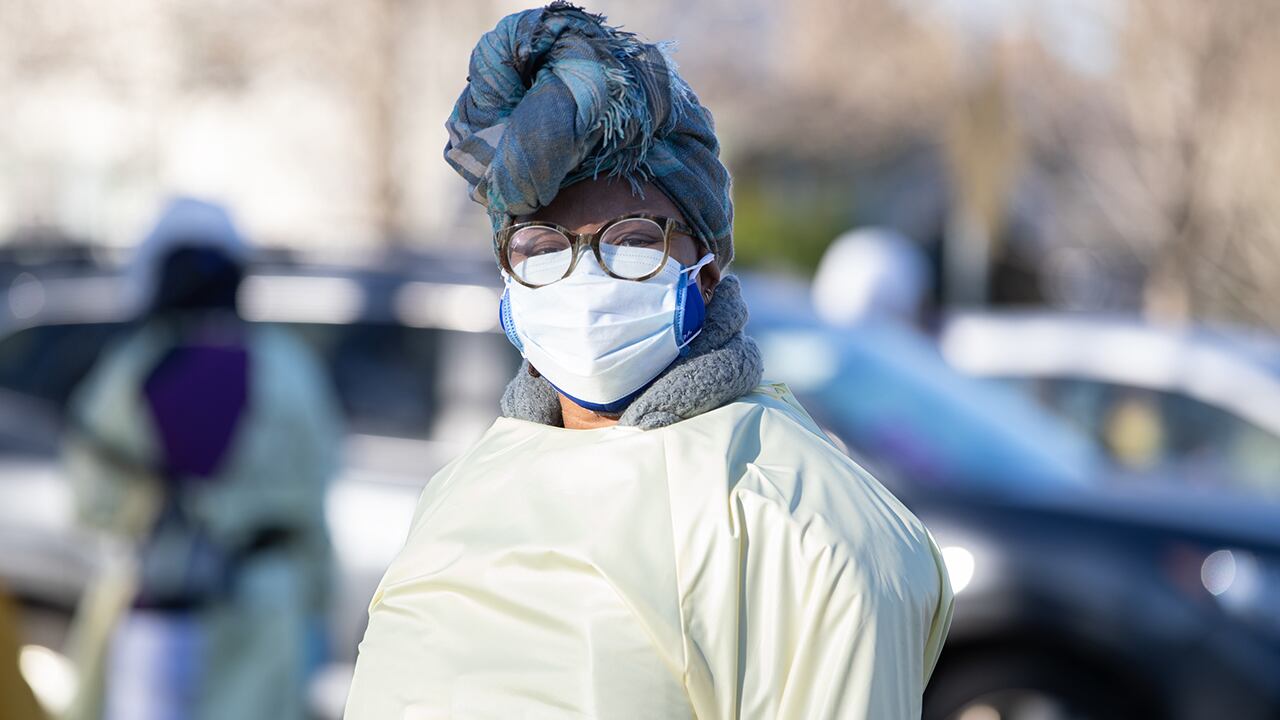White Oregonians have had among the lowest COVID-19 case rates for the entirety of the pandemic, while Black people, Pacific Islanders, and Indigenous groups have had among the highest.
But guess who's being vaccinated at the highest rate? White people.
As of Feb. 1, Oregon Health Authority data shows that 58% of the vaccine doses administered have gone to white people. That's 255,934 out of the 438,277 total doses. In OHA's most recent weekly report, white people made up just 47.5% of the total cases. That's an overrepresentation of more than 10 percentage points.
By contrast, just 1.18% of vaccines have been given to Black people, who made up 2.4% of cases, signifying one of the state's largest disparities.
"The numbers are quite shocking," says Eric Ward, a civil rights strategist with Western States Center. "It is disturbing not to see a very vigorous equity lens placed over the vaccination rollouts and the communities that have been prioritized."
The state's equity panel for vaccinations has moved slowly, and largely been ignored. Last week, Oregon lawmakers of color sent a letter urging Gov. Kate Brown to prioritize low-income seniors, inmates and frontline workers instead of focusing only on people of color, and that by doing so, it would reach racial groups who are dying at higher rates. Ward calls this letter powerful.
"I encourage the governor's office to reconsider the vaccination plans, to listen to lawmakers of color who are reflecting concerns of their communities," Ward says. "It is paramount that we try to get this as right as possible. Real lives are on the line here."
Rep. Andrea Salinas (D-Lake Oswego) agrees that the current numbers are worrisome. "[The data] is not good and it's not just Oregon—we're seeing it around the nation," she says. "[Frontline workers] have the potential to spread and to not have the information at their disposal the way some of their white counterparts do."
The governor's office says the racial demographics of who's getting vaccines reflect who works in healthcare and education. "As we continue to vaccinate larger numbers of Oregonians, we expect those demographics to begin to more closely reflect the racial demographics of the state as a whole," says spokesman Charles Boyle.
Andi Egbert, a senior research associate with the American Public Media Research Lab, says that according to death rates by racial demographic, adjusted by age to account for the large population of white seniors, white people are dying at the lowest rate in Oregon.
She says when you compare the numbers of those vaccinated versus those impacted, it's a red flag.
"The one thing that is absolutely clear is that populations of color have died at two and half or more times the rate of white and Asians through the course of COVID," Egbert says. "If we have any notion of trying to undo the earlier harm that's been done in this pandemic, then any sort of compulsion for equity should prioritize those groups."
Ward says the solution is simple: Listen to lawmakers of color and seriously consider their suggestions. Ward says he anticipates that individuals with networks and resources will begin to discover ways to obtain a vaccine, and he doesn't expect them to be people of color.
"That type of disparity in the beginning of a vaccination rollout almost predicts that, without intervention, it will continue," Ward says. "In times of stress, equity gets lost, and it's been lost in this moment—Black and Indigenous folks are likely to pay the price for that."

